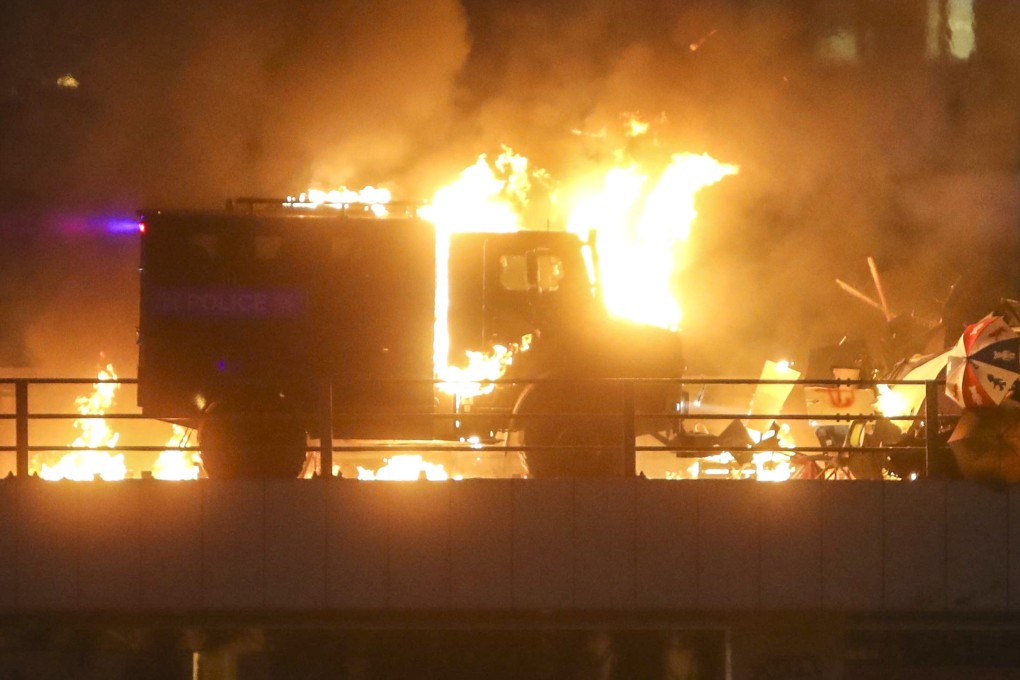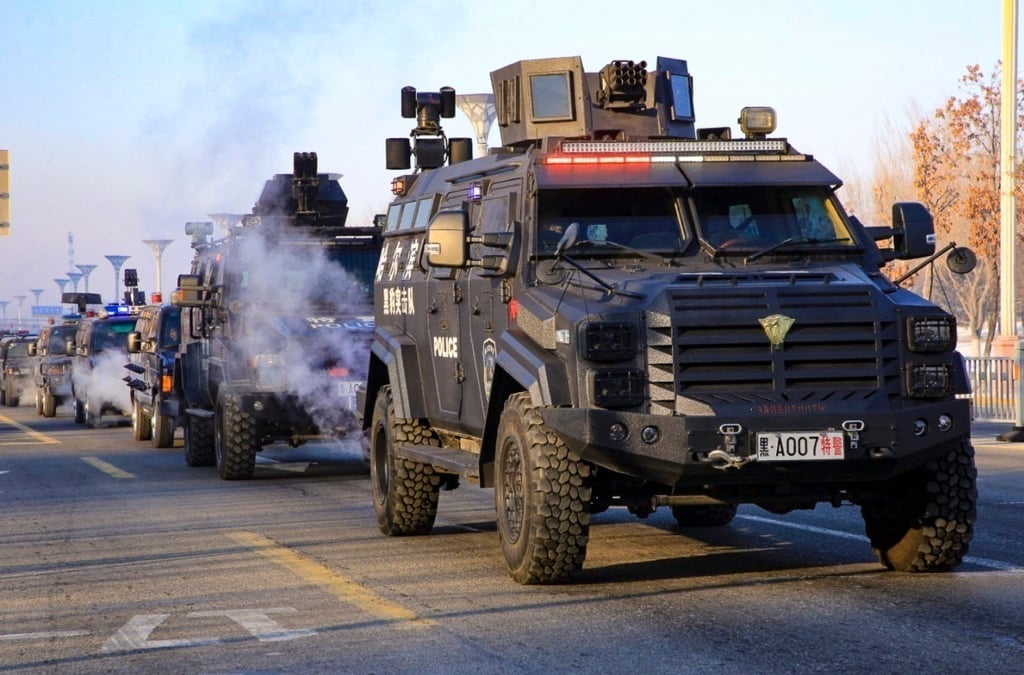Explainer | New Hong Kong police anti-riot ‘Saber-toothed Tigers’ ready ahead of city’s 25th handover anniversary
- Tests complete for the nine-tonne armoured vehicles, costing about US$300,000 each
- The six heavy armoured vehicles latest in mainland purchases by city police after allegations of brutality during 2019 protests sparked US, Britain and EU bans

What do anti-riot armoured vehicles do?
Anti-riot vehicles are specially designed for crowd control, with heavy armour to defend from basic attacks including light weapons. They are usually also armed with non-lethal weapons like tear gas or acoustic cannon to suppress and disperse crowds.
The vehicles may also be specifically fitted out for tasks such as personnel transport communication and commanding, climbing and assault, barricade clearance, and many more functions during a riot.
The six new “Saber-Toothed Tigers” were delivered to Hong Kong in May, and testing by the Electrical and Mechanical Services Department has been completed, according to Hong Kong police.
What is the “Sabre-toothed Tiger” like?
Already widely used by the armed police on the mainland, the vehicle is a modified version of the Ford-550 Super Duty truck, with special bulletproof materials on all sides, reinforced to minimise damage from bullets or explosions, and enough to defend against AK-47 and M16 rifle attacks, according to the manufacturer.
Each vehicle has three gun ports on each side and a machine gun on the roof, and the armament includes smoke or tear gas grenade launchers, a long-range acoustic crowd dispersal device, searchlights, a speaker system, an electric winch and an infrared and night-vision camera system.

According to mainland authorities, each truck is fitted with a V10 engine and can reach a top speed of 130km/h (80mph). Even if all four tyres are punctured, it can still travel at a maximum speed of 80km/h. Five doors on three sides also enable fast mounting and dismounting of its 10 personnel on board.
Each Saber-toothed Tiger costs about 2 million yuan (US$298,830), with dimensions of 6.7 by 2.36 by 3 metres, and weighing about nine tonnes.
